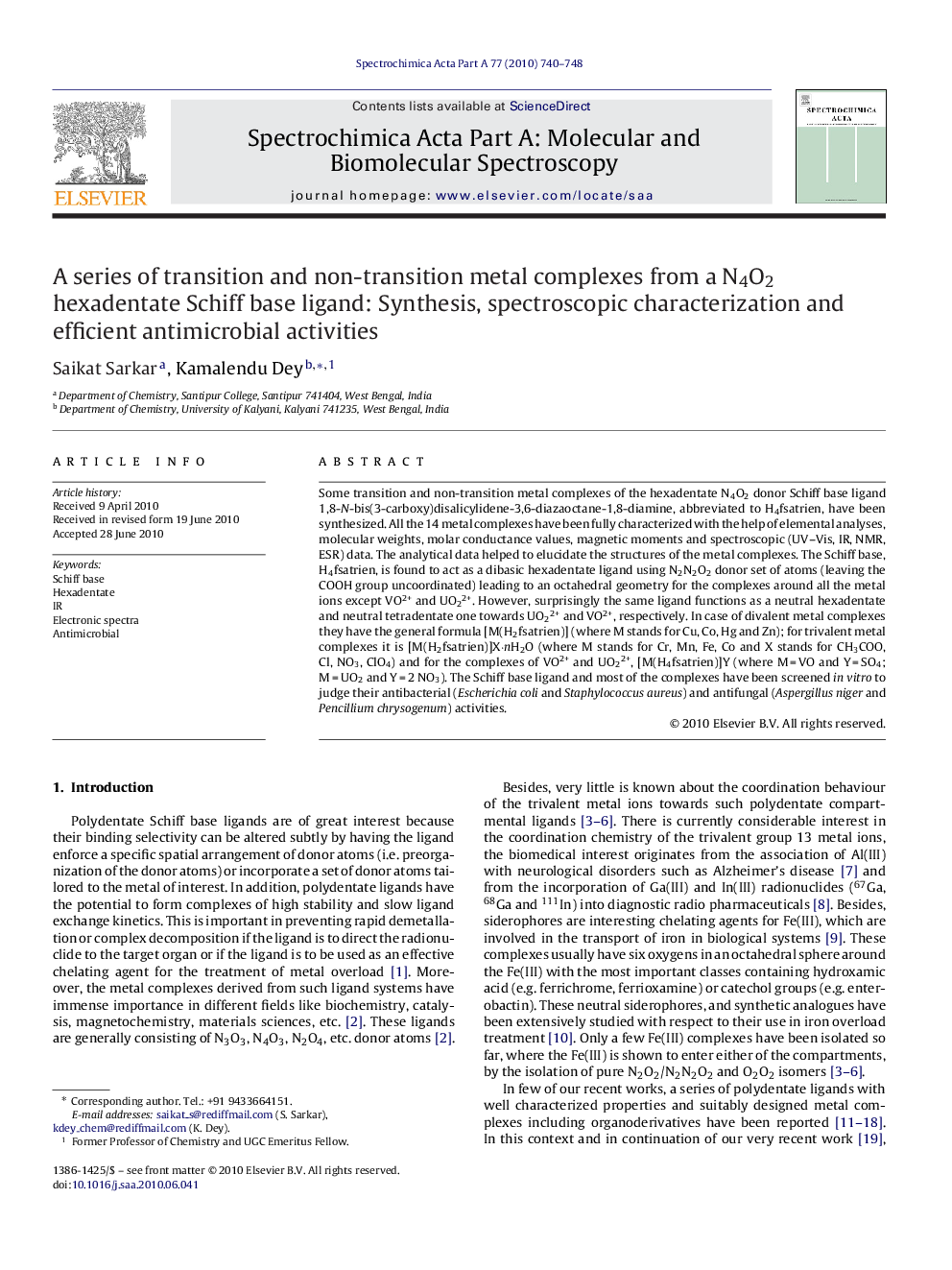| Article ID | Journal | Published Year | Pages | File Type |
|---|---|---|---|---|
| 1233668 | Spectrochimica Acta Part A: Molecular and Biomolecular Spectroscopy | 2010 | 9 Pages |
Some transition and non-transition metal complexes of the hexadentate N4O2 donor Schiff base ligand 1,8-N-bis(3-carboxy)disalicylidene-3,6-diazaoctane-1,8-diamine, abbreviated to H4fsatrien, have been synthesized. All the 14 metal complexes have been fully characterized with the help of elemental analyses, molecular weights, molar conductance values, magnetic moments and spectroscopic (UV–Vis, IR, NMR, ESR) data. The analytical data helped to elucidate the structures of the metal complexes. The Schiff base, H4fsatrien, is found to act as a dibasic hexadentate ligand using N2N2O2 donor set of atoms (leaving the COOH group uncoordinated) leading to an octahedral geometry for the complexes around all the metal ions except VO2+ and UO22+. However, surprisingly the same ligand functions as a neutral hexadentate and neutral tetradentate one towards UO22+ and VO2+, respectively. In case of divalent metal complexes they have the general formula [M(H2fsatrien)] (where M stands for Cu, Co, Hg and Zn); for trivalent metal complexes it is [M(H2fsatrien)]X·nH2O (where M stands for Cr, Mn, Fe, Co and X stands for CH3COO, Cl, NO3, ClO4) and for the complexes of VO2+ and UO22+, [M(H4fsatrien)]Y (where M = VO and Y = SO4; M = UO2 and Y = 2 NO3). The Schiff base ligand and most of the complexes have been screened in vitro to judge their antibacterial (Escherichia coli and Staphylococcus aureus) and antifungal (Aspergillus niger and Pencillium chrysogenum) activities.
